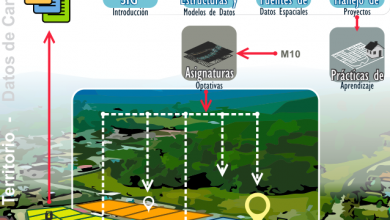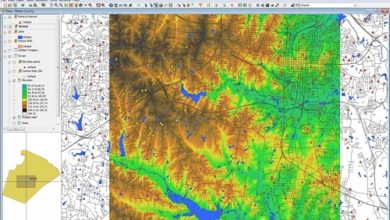OpenFlows – 11 solutions for hydrological, hydraulic and sanitary engineering
Having solutions to solve water-related problems is not new. Of course, in the old way the engineer had to do it with iterative methods that were tedious and unrelated to the CAD/GIS environment. Today, the digital twin connects analysis, infrastructure design and analysis processes every day, including not only modeling for its construction but also operation.
Last year I had the opportunity to sit down with a colleague who I have followed since that time at Haestad Methods. I am referring to Bob Mankowski, who together with Benoit Fredericque attended me during the Going Digital Awards event in Singapore. And, speaking of advances in digital twins for monitoring, we touched on the topic of water solutions, making a comparison of what modeling was before CAD/BIM and what integrated management now represents.
From there came this summary, which I finally graphed to summarize the tools that exist for the development of projects of significant size, such as master plans, territorial development plans and optimization of operations of drinking water, wastewater and stormwater distribution systems.

A. Storm sewer solutions (OpenFlows STORM)
STORM is a solution that allows analysis and simulations for the design of stormwater sewer systems. It has methods for hydrological engineering in aspects such as the calculation of catchment runoff, inlet capacities and flows of pipe networks and channeling infrastructures. It provides functions that other platforms have, such as HEC-RAS, with the difference that this is a more comprehensive solution for a professional, focused not only on analysis but also on design and therefore can be integrated into road and urbanization engineering with tools like OpenRoads or OpenSite.

OpenFlow STORM exists in these two versions:
1. CivilStorm
2. StormCAD.
The difference between these two versions is, that CivilStorm runs independently or on Microstation / OpenRoads, while StormCAD runs on AutoCAD. Both have similar functionalities, although those that run on AutoCAD are a more limited and less comprehensive version to interact with other Bentley Sytstems solutions.
With STORM, a Hydrology professional will be able to apply the rational method to calculate maximum flows in storm sewer design. You could specify Intensity-Duration-Frequency data using equations or tables, and then plot the isohyets and reuse the data in other designs. It supports an unlimited number of subbasin areas and C coefficients for each inlet basin, being able to group external contributing areas, additional flows and remnant flows to model non-local runoff contributing to discharge at any inlet. StormCAD provides several methods for calculating flow time, including full pipe velocity, normal velocity, average and weighted final velocity.
So that a professional, by applying the Rational Method, will be able to solve without problems a user-defined intensity-duration-frequency (IDF) table, Hydro-35, IDF table equation, IDF curve equation, IDF polynomial logarithmic equation. Additionally time of concentration methods: user defined, Carter, Eagleson, Espey/Winslow, Federal Aviation Agency, Kerby/Hathaway, Kirpich (PA and TN), length and speed, SCS Lag, TR-55 Sheet Flow, TR -55 Shallow Concentrated Flow, TR-55 Channel Flow, Kinematic Wave, Friend, Bransby-Williams.
Perhaps one of the things that has impressed me the most is the number of already automated methods. A hydraulics professional will be able to do steady-state simulations, as well as capacity and backwater analysis using profile methods. Also by pressure loss methods you can apply AASHTO, HEC-22, standard, absolute, generic and pressure loss-flow curve.
Additionally, deviation simulation, automatic design based on constraints, friction loss methods: Manning, Kutter, Darcy-Weisbach and Hazen-Williams.
In terms of interoperability, STORM has ways to integrate background maps, such as Bing images as well as with other CAD, GIS and database platforms. Can interact with LandXML, MX Drainage, DXF, DWG, Shapefile, MicroDrainage data.
B. Solutions for hydro-sanitary systems (GEMS)
The GEMS line has these two versions, very similar to STORM:
3. SewerGEMS
4. SewerCAD
In essence, they are tools for modeling wastewater and sewer network systems.

Unlike what could be done with basic functionalities such as those provided by Civil3D, SewerCAD is a specialized solution for complete scenarios that include both analysis, design and operation; applying calibration and integration methods to regulation models such as SCADA.
The strength of SewerCAD in terms of model management is that it can handle multiple scenarios and alternatives. Comparisons can be made, customizable reports can be generated, both at the tabular and spatial data level, including topological control. These results can be displayed graphically, directly in ArcMap or as a Bentley Map i-model.
Hydraulics professionals will be able to find the entire set of St. Venant equations, as well as EPA-SWMM implicit and explicit dynamic motors. It is possible to generate simulations of extended periods and also in steady-state mode. Additionally, it includes integrated functionalities for Storm, Culvert calculations, integration of networks with ponds, pumping and sanitary infrastructures, which would normally be done separately by entering the data directly; managing a unified format for SewerCAD, CivilStorm and StormCAD projects.
The other GEMS solutions are for the design and operation of drinking water network systems:
5. WaterGEMS
6. WaterCAD
The functionalities are similar to Sewer in relation to the systemic approach of optimizing, designing, calibrating and operating complete networks attached to SCADA indicators, with the option of applying automated APEX parameters.

Hydraulics professionals will enjoy seeing how the iterative calculations they used to do with logarithmic sheets and graph interpolation are included here in an automated manner, as are the Darwin calibration procedures for both design, rehabilitation and control of drinking water networks.
The interoperability is very similar to the other platforms, literally all types of infrastructure of a drinking water system can be modeled, being able to interact with both AutoCAD and ArcMap, including HAMMER.
Similar to STORM, SewerGEMS and WaterGEMS work stand alone or on Bentley Systems platforms (Microstation / OpenRoads), while SewerCAD and WaterCAD work on AutoCAD. Additionally, it can work on ArcGIS.
C. Solutions for dam modeling (PondPack)

7. Pond Pack
In the design of modern urban systems, where the topography is not so pronounced, the management of water collection or recycling dams is vital, since in a storm the waters do not have a natural flow by gravity towards a river as happens in topographies. irregular.
PondPack is a specific solution for the management of systems of one or several catchment dams, in which it is required to estimate peak flows, filling and emptying times by applying hydrological methods that guarantee the reduction of flood risks.
Similar to the other applications, but with the same name, PondPack has a standalone version, one that runs on Microstation and another on AutoCAD.
Hydrologic or hydraulic engineering professionals will be able to model unlimited events using methods such as SCS 24-hour type I, IA, II and II for stormwater distribution systems for models such as Midwest U.S, Gauded storm data and also I-D-F curves. Likewise, for concentration methods, Carter, Eagleson, Espey/Winslow, among others, can be applied.
D. Solutions for flooding (FLOOD)
8. FLOOD
This is a tool for modeling, analysis and mitigation of urban flood risks, river edges and coastal areas of influence. Territorial planning professionals would find in FLOOD a solution for both urban drainage systems and the analysis of critical infrastructures applied to hydraulics and hydrology.

It is possible with FLOOD to simulate phenomena such as storms, soil saturation, dam failure, dike failure, drainage system failures, tsunamis, sea level rise or atypical tidal scenarios.
FLOOD is an independent application, but it can interact with models worked on SewerGEMS regarding sewer networks. You can import data from TIN formats generated with Bentley Systems tools, ContexCapture; It can also generate outputs for LumenRT and in terms of raster formats, GDAL supports ARC, ADF, and TIFF files. Other supported formats include WKT, EsriShapefile, NASA DTM and LumenRT 3D.
E. Solutions for hydraulic transients (HAMMER)
9. HAMMER
This is a specific tool for one of the critical processes of hydraulic systems, called transients. When it comes to connecting systems, whether new or a combination with existing systems, it is necessary to estimate critical situations in the different interconnected infrastructures (tanks, valves, pipes, turbines, etc.)

HAMMER can model unlimited scenarios and alternatives, with conceptual or geographic topologies. The analysis can validate each node, being able to test different conditions of pressure, velocity, gravimetric characteristics of liquids, vapor pressure and estimation periods.
A professional will be able to find automated methods that were previously done manually with almost endless iterations for tasks such as a water hammer with pumping and variable speed, as well as friction methods using Hazen Williams, Darcy Weisbach or Mannings both direct and combined. And as for logical or rule-based controls, Unsteady – Vitovsky can be applied.
F. Solutions for hydraulic calculations (MASTER)

10. CurlvertMaster
11.FlowMaster
These are hydraulic calculators for infrastructure design for water systems, which includes not only conceptual analysis but also applying different materials, sections and inlet conditions.
In conclusion, OpenFlows promises to be the best solution for water engineering, especially because the integration to CAD/GIS environments surpasses other types of solutions that are limited in their comprehensiveness and orientation to the complete infrastructure cycle.
Where to find training courses for OpenFlows
One of the best training alternatives for these platforms is AulaGEO.
OpenFlows SewerGEMS / SewerCAD course






